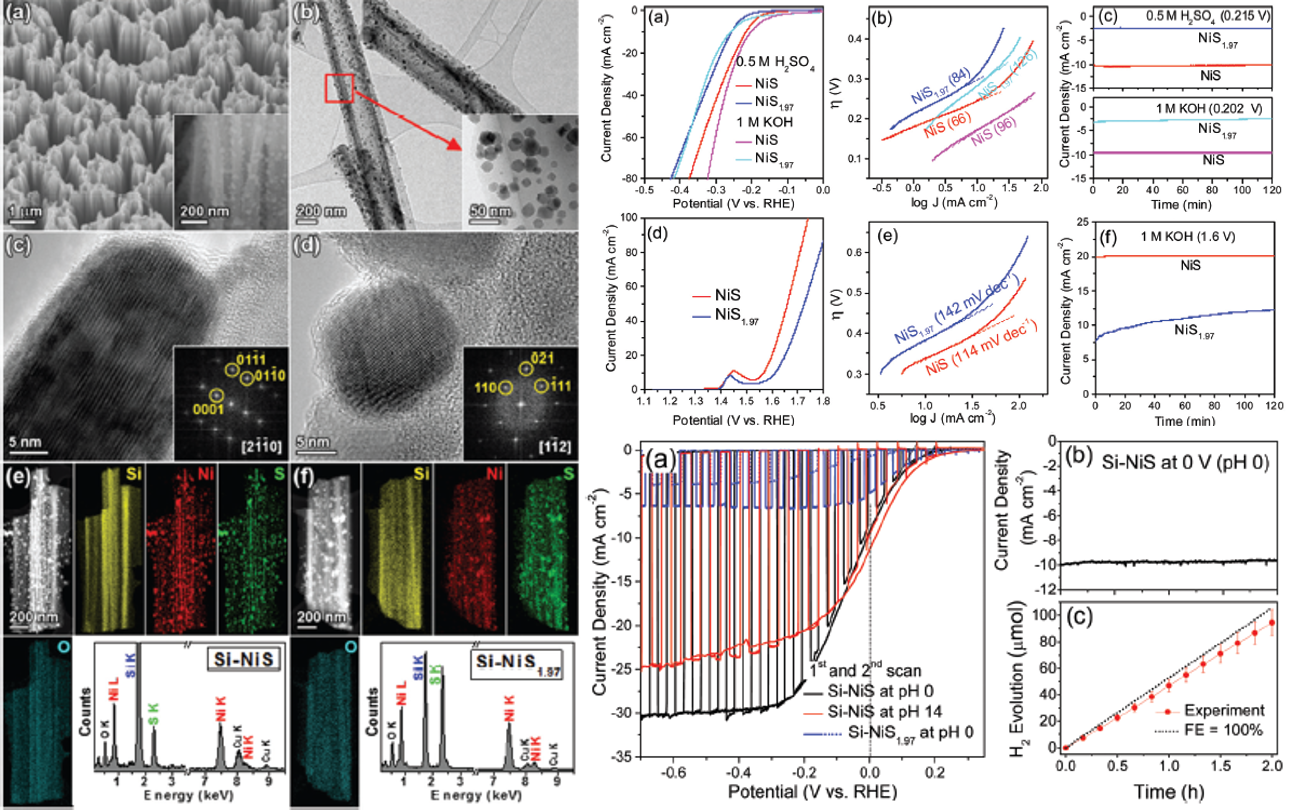- 작성일 2020.03.03
- 작성자 신소재화학과
- 조회수 4670
Nickel sulfide nanocrystals for electrochemical and photoelectrochemical hydrogen generation
JisunYoo 유지선 (제1저자, 석사과정), In Hye Kwak, Ik Seon Kwon, Kidong Park, Doyeon Kim, Jong Hyun Lee, Soo A Lim, EunHee Cha,* and Jeunghee Park*
Journal of Materials Chemistry C, 2020, 8 (9), 3240-3247 (Impact factor: 6.641)
DOI:
10.1039/c9tc05703j
Abstract : Photoelectrochemical water splitting has been considered as the most promising technology for generating hydrogen energy. Herein, we report nickel sulfide nanocrystals (NCs) as excellent catalysts for electrochemical and solar-driven photoelectrochemical (PEC) hydrogen evolution. Two polymorphic NiS and NiS1.97 NCs were synthesized with a controlled composition, and the NiS NCs showed higher electrocatalytic activity than the NiS1.97 NCs toward the hydrogen/oxygen evolution reactions in 0.5 M H2SO4 and 1 M KOH. Photocathodes were fabricated by growing the NiS and NiS1.97 NCs directly onto Si nanowire (NW) arrays. The deposition of NiS NCs results in excellent PEC performance in both acid and alkaline electroytes; the photocurrent is 10 mA cm2 (at 0 V vs. RHE) and the onset potential is 0.2 V. In contrast, the Si-NiS1.97 photocathode exhibits much lower photocurrent and less stability. Detailed structure analysis using X-ray photoelectron spectroscopy reveals that the NiS is more metallic than the NiS1.97 and retains the same electronic structures during the catalytic reaction. The high catalytic activity of metallic NiS NCs should be the main cause of this enhanced PEC performance, promising efficient water-splitting Si-based PEC cells.
